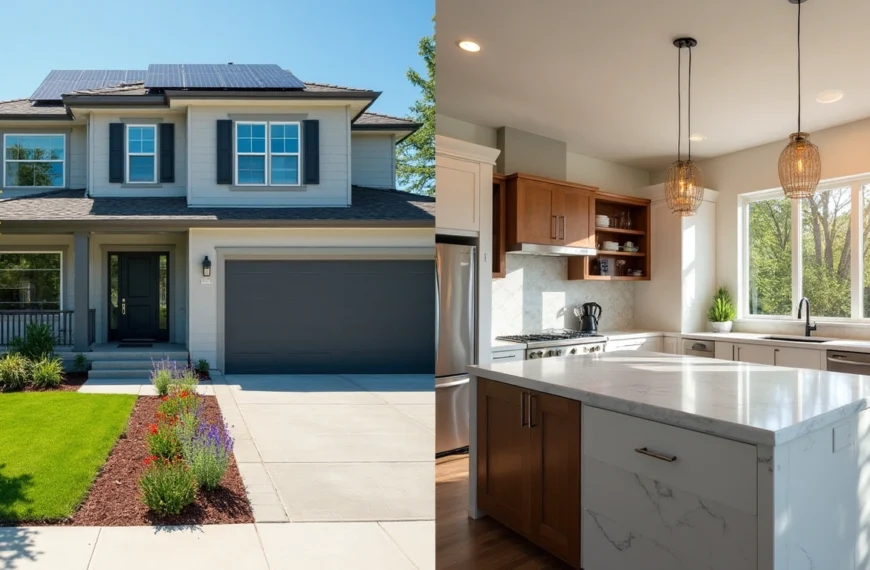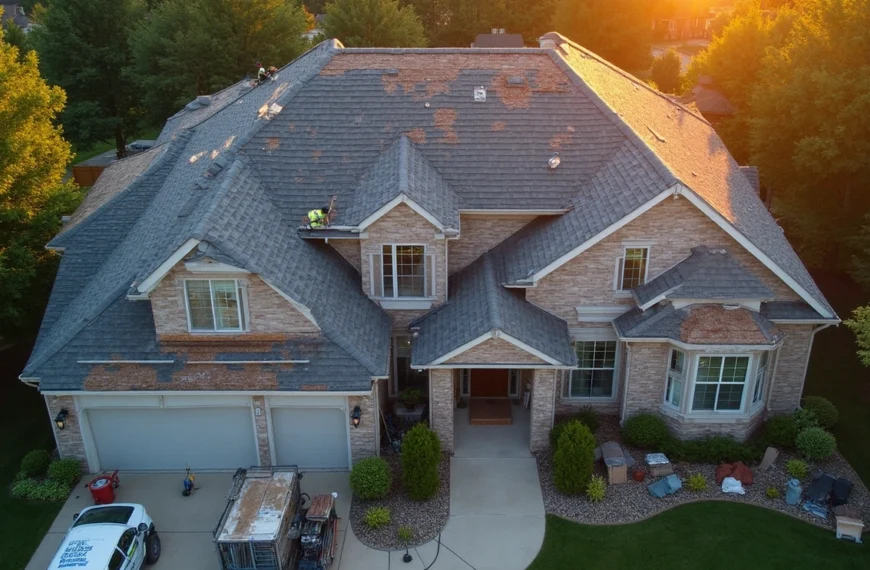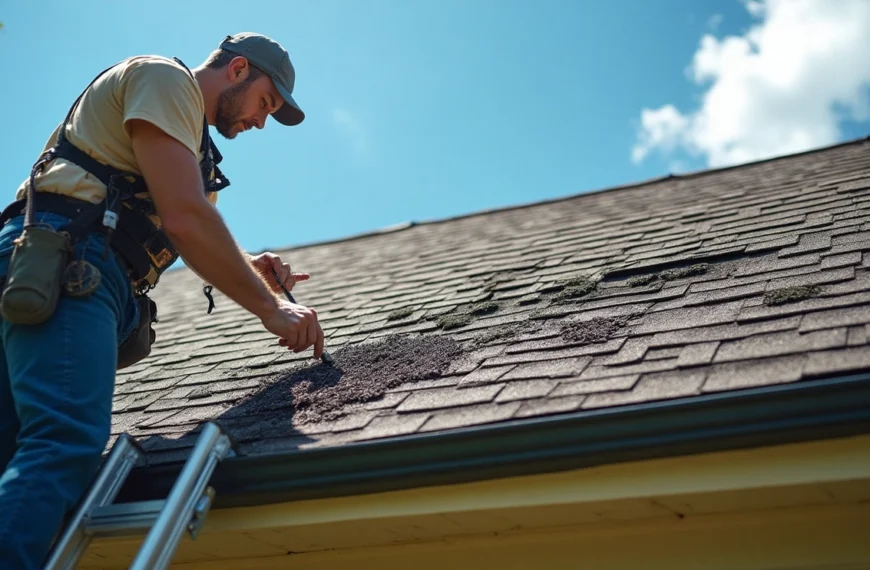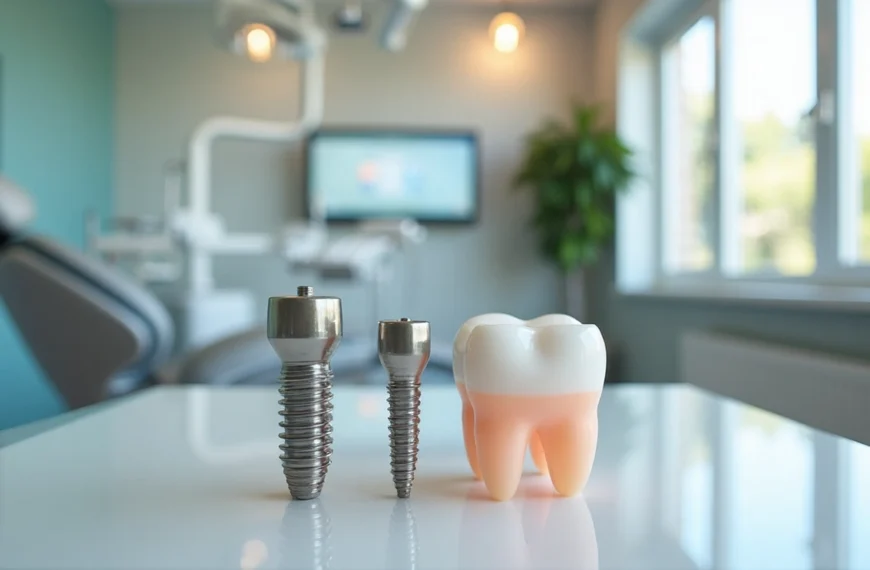Your choice between a shower and bathtub will affect your daily life and your budget. A bathroom renovation brings a big price difference to the table: an average walk-in shower costs about $9,000, while you’ll pay around $5,525 for a standard bathtub. The price difference is just the start of what you need to think about.
The latest Houzz 2023 bathroom trend report shows that homeowners are moving away from tubs. More than 25% now remove their tubs during renovations, and 77% of these homeowners make their showers bigger. People clearly want walk-in showers or shower-tub combinations these days. Real estate experts still recommend keeping at least one tub in your home. This helps protect your home’s resale value, especially if you live where young families buy homes.
The shower-or-tub choice changes your monthly bills too. A typical 10-minute shower uses about 21 gallons of water, but a standard tub needs 25-40 gallons to fill. Your family’s bathing habits could make this difference show up clearly on your water bill.
This piece covers the financial side of picking between a shower and bathtub. You’ll learn what you need to know before investing – from switching your tub to a shower to picking the right walk-in shower-tub combo. We’ll help you balance today’s costs against long-term value.
Lifestyle Fit: How Your Daily Routine Affects the Right Choice
Image Source: DaBella
The choice between a shower and bathtub depends on your daily routine and family needs. Americans take showers or baths five to six times weekly, and each session lasts about 10-15 minutes. Your lifestyle plays a big role in making the right choice.
Do You Actually Use the Tub?
Most homeowners keep bathtubs they barely use, which wastes precious bathroom space. Many people choose bigger showers instead of rarely-used tubs during renovations. The space might work better as a larger shower area or extra storage if you haven’t taken a bath in the last month.
Bathing Kids or Pets: Practical Needs
A bathtub becomes a must-have for families with young kids. Most children under eight find showers challenging to use. Tubs let you bathe multiple kids at once in a contained space. Pet owners love tubs too—they keep both animals and the mess under control. While shower options exist (like adjustable handheld showerheads and non-slip surfaces), most parents say tubs make bath time much easier for children.
Relaxation vs Quick Showers
Your choice between relaxation and speed makes a big difference. A 2022 study in the Journal of Applied Physiology showed that regular 30-minute baths at 40°C reduced sympathetic nerve activity, which helps both body and mind. Research from Japan also suggests people fall asleep faster after baths, especially during winter.
Showers shine when it comes to convenience. They save time and energy while still offering health perks—cold showers boost endorphin levels, and warm showers help you relax before bed.
Shared vs Private Bathroom Use
Flexibility becomes key in shared bathrooms. A tub-shower combo works great for different family members’ needs. Homes with multiple bathrooms might benefit from at least one tub while adding walk-in showers in other spaces. A combo unit might be your best bet if you have just one bathroom.
Budget Planning: Upfront Costs vs Long-Term Value
Image Source: House Beautiful
Smart financial planning helps you decide between installing a shower or bathtub. Homeowners make better decisions that line up with their budgets and future needs by understanding both immediate costs and what lies ahead.
Replacing Bathtub with Shower: What to Expect
A bathtub-to-shower conversion typically runs about $3,000. The price ranges from $1,500 to $8,000 based on your choice of materials and job complexity. You should budget between $6,000 and $10,000 if you want to renovate the entire wet area.
Your existing tub’s removal plays a big role in the total cost. Standard tubs cost $150 to $300 to remove. Heavy cast iron tubs can get pricey at $450 to $2,000. Most contractors include the removal cost in their quotes.
Your final bill depends on several key factors:
Shower type (stall: $700-$3,000; walk-in: $1,150-$8,000; tile: $3,500-$15,000)
Door selection (framed: $200-$600; frameless: $500-$3,000)
Structural modifications or repairs
Permit requirements ($200-$2,000 based on location)
Walk-In Shower Tub Combo: Is It Worth the Price?
Standard walk-in tubs without installation usually cost under $10,000. Premium models with extra features and installation can run over $25,000. Simple models with standard safety features cost between $2,000 and $5,000.
These combinations are a great way to get accessibility benefits that might save you from expensive bathroom renovations later. They also meet different household needs while keeping good resale value.
Plumbing and Structural Costs
Surprise plumbing changes often increase renovation costs. Plumbers charge $45 to $200 per hour. You’ll pay extra for specific jobs like shower installation ($8,200) or pipe replacement ($1,250).
There’s another reason to think about structural changes – you might need stronger floors, especially for bigger tubs. Waterproofing is a vital investment you shouldn’t skip to prevent future damage.
DIY vs Professional Installation
Professional bathroom renovations usually put 40-65% of the total budget into labor. DIY shower installations start at $400, while bathtub remodels begin around $200.
All the same, professionals should handle most plumbing work to avoid water damage and meet building codes. Amateur installations might need expensive fixes later. Poorly installed glass doors can leak, and bad plumbing could seriously damage your home’s structure.
Safety and Accessibility: Planning for the Future
Image Source: Multi Trade Building Services
Safety should be your top priority when deciding between a shower vs bathtub for long-term home use. Bathroom accidents account for more than 2/3 of emergency room visits due to falls. This is a vital consideration for homeowners of all ages.
Curbless Showers for Aging in Place
Curbless showers are the life-blood of available bathroom design. These zero-threshold installations don’t require stepping over raised edges, so they reduce tripping and falling risks. Homeowners who plan to age in place will find several advantages:
Small bathrooms look larger with optimized design
Wheelchairs can easily access spaces at least 36″x36″
Cleaning becomes simpler with fewer grout lines
Moving mobility aids like benches in and out becomes easier
These benefits are great, but curbless showers need proper drainage and waterproofing to keep water from spreading beyond the shower area.
Walk-In Shower Bathtub Options for Mobility
Walk-in tub options provide a practical middle ground in the shower vs bathtub decision for people who enjoy bathing but need available features. These specialized units come with:
Doors that swing outward, so you don’t have to step over high tub walls. Most models drain and fill quickly, which means less waiting time. High-end models come with built-in seating, grab bars, and handheld shower attachments.
Cost considerations vary widely. Simple models with standard safety features cost between $2,000 and $5,000, while premium installations can cost more than $10,000.
Slip Hazards and Waterproofing Essentials
Preventing accidents means addressing simple safety concerns. Hard surfaces combined with water make bathrooms especially dangerous.
Non-slip flooring, well-placed grab bars, and good lighting work best to prevent accidents, especially at night. Waterproofing is another significant factor. Poor installation can cause water damage, mold growth, and breathing problems.
Many professionals recommend complete waterproofing systems like Schluter that provide continuous moisture protection throughout the bathroom. These systems use uncoupling membranes to prevent tile and grout cracking by letting the substrate expand and contract on its own.
Environmental Impact: Water and Energy Efficiency
Image Source: Ambient Building Products
Your choice between a shower or bathtub affects more than your wallet – it has a big effect on our planet. Smart environmental choices help you save resources and cut down utility bills over time.
Water Consumption: Tub vs Shower
Showers and baths use very different amounts of water. A standard bathtub holds between 120 and 150 liters of water, and needs 70-80 liters even when it’s half full. A typical 5-minute shower uses just 30-40 liters. Standard showerheads flow at 2.5 gallons per minute, so a 10-minute shower uses about 25 gallons, while a full bath needs up to 50 gallons. Quick showers are the best way to save water.
Low-Flow Fixtures and Eco-Friendly Upgrades
Water-efficient fixtures are a great way to get impressive savings. WaterSense labeled showerheads can save the average family about 2,700 gallons annually. These water savings help conserve energy too—about 330 kilowatt hours of electricity each year, enough to power a house for 11 days.
Low-flow fixtures use about half the gallons per minute compared to standard ones. You can save more water by:
Adding aerators to taps and showerheads to reduce flow while keeping good pressure
Shutting off water while you shampoo or soap up
Using a timer for showers
Catching warm-up water in a bucket
Tankless Water Heaters and Energy Savings
Tankless water heaters give you hot water right away and eliminate wasted energy from storage heaters. Homes using 41 gallons or less of hot water daily find these systems 24-34% more energy efficient than regular models. Houses with higher water usage (around 86 gallons daily) still see efficiency gains of 8-14%.
The original cost of tankless systems is higher than traditional water heaters, but they last longer—usually over 20 years compared to 10-15 years for tank models. Lower operating costs often make up for the higher purchase price.
Comparison Table
|
Comparison Factor |
Shower |
Bathtub |
|---|---|---|
|
Installation Costs |
Average $9,000 |
Average $5,525 |
|
Water Usage |
~21 gallons (10-minute shower) |
25-40 gallons (per bath) |
|
Installation Types |
– Standard stall: $700-$3,000 |
– Standard tub installation |
|
Accessibility Features |
– No curb design |
– Walk-in designs available |
|
Best Suited For |
– Quick daily use |
– Families with young children |
|
Energy Efficiency |
Better option for daily use |
Uses more energy due to water volume |
|
Resale Value Effect |
Modern choice that buyers prefer, but homes need at least one bathtub |
Essential for families with children; keeping one tub recommended |
|
Maintenance |
– Minimal grout lines |
– Regular upkeep needed |
Conclusion
Making the Right Choice for Your Home and Budget
Your choice between a shower and bathtub comes down to several connected factors. There’s no one-size-fits-all solution. A good decision needs careful thought about installation costs, water usage, access needs, and environmental effects – things every homeowner should think about when planning bathroom updates.
Money matters show a big gap in original costs. Standard bathtubs cost less upfront at $5,525 on average. Showers need a bigger investment at around $9,000. But when it comes to water usage, showers win in the long run. A 10-minute shower uses 21 gallons while a single bath needs 25-40 gallons.
Your lifestyle will shape what works best for your home. Families with kids or pets need at least one bathtub. Busy professionals might prefer quick showers instead. Many homeowners go for a mix – keeping one tub while adding walk-in showers in other bathrooms.
Access is a vital factor, especially if you plan to stay in your home as you age. Curbless showers are safer with their zero-threshold entries. Walk-in tubs offer therapy benefits for those who love soaking. Both need proper waterproofing and setup to stay safe.
Environmental effects play a big role in making this choice. Low-flow showerheads can help an average family save 2,700 gallons each year. On top of that, tankless water heaters with shower systems help cut utility bills by 24-34% for regular water users.
Before you lock in your bathroom renovation plans:
Take a real look at your daily routine and family needs
Add up both current costs and future bills
Plan for future access needs
Look into eco-friendly options
Talk to qualified pros about installation
The best bathroom setup matches your needs with practical solutions. Modern trends favor bigger shower spaces. Still, keeping one bathtub helps your home’s resale value, especially in areas with young families. Whatever you pick, quality materials and professional installation will give you a safe, efficient bathroom you’ll enjoy for years.
FAQs
Q1. How much water does a shower use compared to a bath? A typical 10-minute shower uses about 21 gallons of water, while a standard bathtub requires 25-40 gallons to fill. Showers are generally more water-efficient for daily use, especially with low-flow fixtures.
Q2. What are the average costs for installing a shower versus a bathtub? On average, installing a walk-in shower costs around $9,000, while a standard bathtub installation is typically about $5,525. However, costs can vary widely depending on materials, features, and labor.
Q3. Are there accessibility options for both showers and bathtubs? Yes, there are accessibility options for both. Curbless showers offer zero-threshold entry, while walk-in tubs provide built-in seating and easy access. Both can be equipped with grab bars and handheld showerheads for improved safety and convenience.
Q4. How do showers and bathtubs affect home resale value? While modern homeowners often prefer expanded shower spaces, it’s recommended to keep at least one bathtub in the house for resale value. This is especially important in neighborhoods with young families who may prefer bathtubs for children.
Q5. What are some eco-friendly upgrades for bathrooms? Eco-friendly bathroom upgrades include installing low-flow showerheads and faucet aerators, using WaterSense labeled fixtures, and considering tankless water heaters. These can significantly reduce water and energy consumption, leading to lower utility bills.
References
[1] – https://makeitright.ca/holmes-advice/bathroom-renovation/walk-in-showers-vs-bathtubs-which-is-better/
[2] – https://www.ronalbathrooms.com/en_GB/magazine/water-consumption-shower-vs-bathtub
[3] – https://www.visitingangels.com/articles/7-bathroom-safety-tips-to-prevent-falls-and-injuries/106
[4] – https://hailekitchen.com/tub-shower-or-both-which-is-right-for-your-bath-design/
[5] – https://www.dreambathsbybee.com/blog/p.230829000/the-role-of-bathtubs-and-showers-in-relaxation-and-self-care/
[6] – https://www.energy.gov/energysaver/tankless-or-demand-type-water-heaters
[7] – https://www.ideagroup.it/blog/en/bathtub-or-shower-heres-how-to-have-both/
[8] – https://www.angi.com/articles/convert-tub-to-shower-cost.htm
[9] – https://www.homedepot.com/services/c/cost-tub-shower-conversion/f939dd56a
[10] – https://www.thisoldhouse.com/bathrooms/reviews/tub-to-shower-conversion-cost
[11] – https://www.kohlerwalkinbath.com/price-cost/
[12] – https://modernize.com/walk-in-tubs/cost-guide
[13] – https://www.angi.com/articles/walk-in-bathtub-cost.htm
[14] – https://www.ranneyblair.com/blog/diy-bathroom-remodeling-vs-hiring-a-contractor/
[15] – https://homeguide.com/costs/diy-bathroom-remodel-cost
[16] – https://www.angi.com/articles/tub-vs-shower.htm
[17] – https://www.lifewaymobility.com/blog/walk-in-tub-or-walk-in-shower-what-are-the-options/
[18] – https://finehomecontracting.com/ada-and-aging-in-place-remodels-all-about-curbless-showers/
[19] – https://www.schluter.com/schluter-us/en_US/blog-the-benefits-of-a-curbless-shower
[20] – https://www.affordablewalkinshower.com/blog/curbless-walk-in-shower-bathroom-remodeling
[21] – https://jacuzzibathremodel.com/blog/jacuzzi-walk-in-shower-options-for-people-with-mobility-issues/
[22] – https://blog.rehabselect.net/bathrooms-top-the-list-for-fall-hazards-how-to-make-them-safer
[23] – https://takecareoftexas.org/about-us/blog/shower-vs-bath-debate
[24] – https://www.epa.gov/watersense/showerheads
[25] – https://www.oakharbor.gov/555/Low-Flow-Fixtures
[26] – https://watercalculator.org/posts/shower-bath/
[27] – https://www.thisoldhouse.com/plumbing/21019184/read-this-before-you-buy-a-tankless-water-heater
![Shower vs Bathtub: A Money-Saving Guide for Homeowners [2025]](https://consumersweek.com/wp-content/uploads/2025/06/Shower-vs-Bathtub-A-Money-Saving-Guide-for-Homeowners-2025.webp)












![No Win No Fee Lawyers: The Hidden Truth About Settlement Cuts Legal representation through no win no fee lawyers gives clients a way to fight cases without paying anything upfront. Many clients don't know that these services take a big chunk of money after winning the case. Lawyers usually take 25% to 40% of what you win as their contingency fee. The amount lawyers take from settlements can add up fast. A $100,000 settlement means your attorney gets $30,000 if they charge a 30% fee after winning your case. Your solicitor's cut might be £10,000 from a £30,000 compensation award, based on your agreement percentage. This payment model stays pretty much the same for no win no fee lawyers in different places, though percentages can change. This piece breaks down what you need to know about contingency fee deals. You'll learn about standard fee ranges, extra costs beyond the basic fee, and times when this payment setup might not work in your favor. Smart clients should think over these money matters before signing up with a lawyer to make better choices about their legal help. What No-Win No-Fee Really Means Image Source: Express Legal Funding A no-win no-fee arrangement, also called a Conditional Fee Agreement, changes the way people get legal help. This payment approach removes the need to pay legal fees upfront and creates a partnership between clients and their attorneys. How contingency fees work No-win no-fee agreements are based on contingency fees. Lawyers get paid only when they win compensation for their clients. Most lawyers take between 25% and 40% of the final amount, based on how complex the case is and where it's filed. Lawyers take their cut after winning the case. To name just one example, see a case where a lawyer wins £30,000 in compensation with a 33% fee - they would receive £10,000. On top of that, some law firms use sliding scales where they charge less for quick settlements and more if the case goes to trial. The law requires a written agreement before any work starts. This paperwork spells out the lawyer's percentage, what costs you'll need to cover, and other key details. What happens if you lose the case The meaning behind "no-win no-fee" is clear - losing your case means you won't pay your lawyer anything. All the same, you should know about a few money-related details. You won't owe your lawyer when you lose, but some deals might make you pay for court fees, expert witnesses, or other case expenses. The other side could also ask you to pay their legal costs. Many lawyers suggest getting "After Event" insurance to protect their clients. These policies cover any costs if you lose your case, which makes the no-win no-fee setup much safer. Why lawyers offer this model Lawyers want to make legal help available to more people, so they offer these payment plans. This setup helps people who don't have much money take legal action when they have valid claims. The payment structure motivates lawyers to work hard. They only get paid by winning cases, which pushes them to get the best results possible. Lawyers carefully assess each case before taking it on a no-win no-fee basis. They usually accept cases that have a good chance of winning, since they put in lots of time and resources without any guaranteed payment. The Real Cost: How Much Do Lawyers Take from a Settlement Image Source: Greiner Law Corp. The true cost of no-win no-fee legal representation becomes clear once we look at contingency fees. Many clients feel surprised to see a big chunk of their settlement checks going to their attorney's fees. Typical percentage ranges (25%–40%) No win no fee lawyers typically ask for 25% to 40% of the total settlement amount. Personal injury attorneys usually take 33.3% (one-third) of the awarded compensation[101]. Lawyers and clients agree on this percentage before any work starts on the case. Several factors shape the final percentage. Your chances of winning, case complexity, and the work to be done play key roles in determining the attorney's cut. Some areas have laws that cap the maximum contingency fees for specific types of cases. Sliding scale based on case complexity Law firms often use a tiered fee system that changes with the case stage and complexity. This scale rewards quick settlements while paying attorneys fairly if more work becomes needed. The fee might start at 30% if the case settles before lawsuit filing. This number could climb to 35% after filing or reach 40% if the case goes to trial. Law firms often group cases by complexity: 10%-20%: Simple cases with straightforward settlements 25%-35%: Typical personal injury cases 35% and above: Complex cases requiring extensive resources Examples of payout breakdowns These ground examples show how fees affect settlements: A $15,000 settlement with a 33.3% contingency fee.pdf) puts $5,000 in the attorney's pocket, leaving $10,000 for the client. Similarly, from a $100,000 settlement with a 33% fee, the attorney gets $33,000 while the client receives $67,000[102]. Complex cases tell a different story. A $100,000 settlement with a 30% fee plus $5,000 in extra costs leaves $65,000 for the client after all deductions. These fees substantially change the client's final payout. Hidden Costs You Might Not Expect Image Source: Nelson Personal Injury Lawyers Beyond percentage-based fees, clients often feel surprised by extra costs that can reduce their final compensation by a lot. These hidden costs show up in the fine print of no-win no-fee agreements. You should think over these details before signing. Court filing and expert witness fees Legal proceedings come with unavoidable court filing fees. These charges differ by jurisdiction. They usually range from $30 for small claims to several hundred dollars for complex civil lawsuits. Expert witnesses can be expensive, with hourly rates ranging from $150 to $1,000 based on their credentials and testimony complexity. Expert witnesses charge more for court appearances than consultation work because of added pressure and prep time. Clients might still need to pay experts for their prep work even if the case settles before trial. Medical report and investigation costs Medical documentation is a vital part of many legal claims. These costs include fees to release medical records, create specialized reports, and prepare documents. Investigation costs cover evidence gathering, police reports, witness interviews, and other fact-finding work needed to build a strong case. Of course, some firms say they'll cover these expenses upfront, but clients don't completely avoid these costs. When these costs are deducted from your compensation Law firms take these expenses from the settlement amount before they calculate their percentage fee, though each firm handles this differently. Some lawyers subtract these costs after figuring out their contingency fee, which changes how much money clients end up with. Most firms pay case-related costs during the process and get their money back from the settlement. The defendant usually pays most simple legal costs and disbursements in successful cases, but not always everything. Insurance protects clients from costs in unsuccessful claims at many law firms, but this protection isn't guaranteed. Clients should review their agreements carefully since they might still need to pay specific expenses even if they lose their case. When No-Win No-Fee Might Not Be the Best Option Contingency fee arrangements give many people access to justice. However, this payment model doesn't always work in a client's best interests. Knowing these limitations helps clients make better decisions about their legal representation. Cases with unclear liability Lawyer no win no fee arrangements work best in cases where fault is clear. We assessed the probability of success before taking contingency cases. Lawyers might turn down cases if there isn't enough evidence of the other party's negligence or if liability isn't certain. Cases with multiple responsible parties create more challenges. The situation gets complicated fast when several parties share liability. Lawyers are less likely to take these cases on contingency. They need to be confident they can prove the other party's negligence before accepting a case. Low-damage or low-payout claims Small claims often don't work well with the contingency model, even with real injuries. Cases that have minimal injuries or limited financial damages might not bring enough compensation to cover legal costs. The potential settlement needs to be big enough to pay for investigations, witness interviews and court fees. Personal injury lawyers often turn down cases where the "compensation potential" is too small. This doesn't mean the claim isn't valid - it just means the economics don't add up for a contingency arrangement. Situations where hourly billing may be better Hourly billing has clear advantages in certain cases. Clients see exactly what they're paying for - every hour worked and task completed. This model works well for cases that need lots of attention but don't have clear financial outcomes. Complex litigation with opposing parties works better with hourly billing and a retainer fee. Clients have more control over their case and don't feel pressured to settle quickly. Cases that need extensive preparation but have uncertain outcomes fit the hourly model better. Lawyers can spend the time needed without worrying about contingency limits. This approach often leads to better representation, especially for complex legal issues that need special expertise. Conclusion Understanding the Full Picture Before You Sign No-win no-fee arrangements offer legal representation without upfront costs. Of course, this seems attractive at first glance. In spite of that, you need to think about how these agreements can affect your final compensation. Legal fees usually range from 25% to 40% of your settlement - but that's just the start. You'll face more deductions like court filing fees, expert witness costs, and charges for medical documentation. What looks like a "free" service ends up taking a big chunk of your compensation to cover legal expenses. These arrangements work best in specific situations - cases with obvious liability, substantial damages, and solid evidence. If you have a low-value claim or complex liability issues, traditional hourly billing might serve you better. Without doubt, you should ask for clear explanations of all possible costs before signing anything. Read the fine print closely, especially when you have to deal with expenses in unsuccessful cases. Ask to see sample settlement breakdowns that show all deductions. This helps you picture what you might actually take home. Your choice to go with a no-win no-fee arrangement depends on your situation. This model helps if you don't have money to pursue valid claims. But if you have a strong case and enough funds, other fee structures might let you keep more of your compensation. Whatever payment model you choose, knowing exactly how much lawyers take from settlements helps you make better decisions. This knowledge lets you approach legal representation with real expectations and better control over your money. FAQs Q1. What percentage of a settlement do no-win no-fee lawyers typically take? No-win no-fee lawyers typically charge between 25% to 40% of the final settlement amount as their contingency fee. The exact percentage often depends on the complexity of the case and the stage at which it is resolved. Q2. Are there any hidden costs in no-win no-fee arrangements? Yes, there can be additional costs beyond the lawyer's percentage fee. These may include court filing fees, expert witness costs, medical report expenses, and investigation costs. These expenses are usually deducted from the settlement amount before or after the lawyer's fee is calculated. Q3. What happens if I lose my case in a no-win no-fee arrangement? If you lose your case, you generally won't have to pay your lawyer's fees. However, you might still be responsible for certain expenses like court costs or the opposing party's legal fees. Many lawyers offer insurance to protect clients from these potential costs in case of an unsuccessful claim. Q4. When might a no-win no-fee arrangement not be the best option? No-win no-fee arrangements may not be ideal for cases with unclear liability, low-value claims, or complex legal issues requiring extensive preparation. In these situations, traditional hourly billing might be more appropriate and potentially more cost-effective for the client. Q5. Can I negotiate the percentage a lawyer takes from my settlement? Yes, the contingency fee percentage is often negotiable. It's typically agreed upon and formalized in writing before the lawyer begins working on your case. Don't hesitate to discuss the fee structure with your lawyer and ask for a detailed breakdown of potential costs and deductions.](https://consumersweek.com/wp-content/uploads/2025/06/No-Win-No-Fee-Lawyers-The-Hidden-Truth-About-Settlement-Cuts-870x570.webp)

